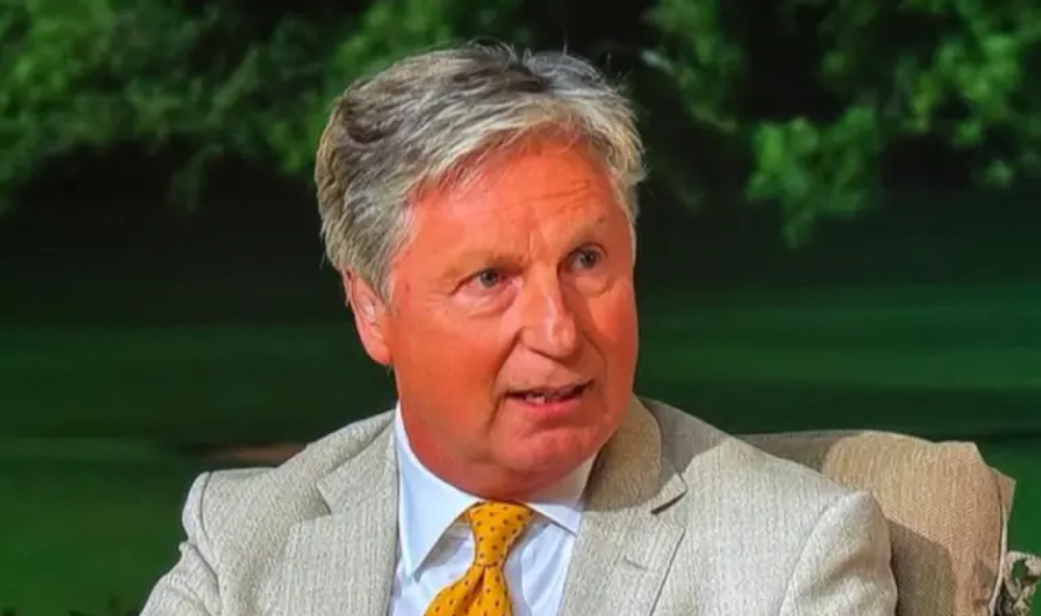
Imago
© DBTTofficial / X / Fair Use

Imago
© DBTTofficial / X / Fair Use
Out of 10,000 professional golfers worldwide, only about 100-125 make it to the PGA Tour’s elite level. The rest? They’re grinding it out, missing birthdays and family milestones, all while facing the prospect of never playing competitive amateur golf again if they fail to succeed. Brandel Chamblee thinks that’s fundamentally unfair.
Watch What’s Trending Now!
The golf analyst recently sparked conversation after Colt Knost announced he’s applying to regain his amateur status. Chamblee addressed this exact issue on his podcast, “The Favorite Chamblee,” alongside co-host Bailey.
Knost spent eight years on the PGA Tour. He earned nearly $4.5 million across 199 starts. He made 92 cuts and notched four third-place finishes. But he never won. Now, five years after his last professional start at the 2020 Waste Management Phoenix Open, he wants to return to amateur competition.
ADVERTISEMENT
The backlash was swift. Critics pointed to his substantial earnings and experience. One fan wrote on X, “This is absolutely ridiculous. He won millions as a pro golfer and reached the top 100 in the Official World Golf Ranking.” Another added, “No offence, but if you have two wins as a pro, there is no way in hell anyone should be reinstated as an amateur.” The debate centers on fairness. Should someone with Knost’s resume compete against lifelong amateurs?
Chamblee recently challenged merit-based decisions in professional golf. His stance on amateur reinstatement follows similar logic. Merit should matter. But so should nuance.
Chamblee argues that a lifetime ban from amateur golf is “too stiff a penalty.” He believes professionals who tried and failed deserve another chance. However, he proposes a system. The waiting period should match the professional career length.
ADVERTISEMENT
“If you turn professional and you, after two or three years, you realize this is not for me, I’m not getting it done. What am I doing? I’m going to go get a job as you know, in commercial real estate, then you set out for two or three years or one or two years, maybe it’s 50% of the time you were a professional.”
His proportional approach makes sense. Someone who played professionally for two or three years would wait one to two years. But what about someone like Matt Kuchar? The 47-year-old turned pro at 22. He’s been professional for 25 years. Under Chamblee’s system, Kuchar would wait considerably longer.
ADVERTISEMENT
Chamblee also highlighted the harsh realities of professional golf. Players miss birthdays. They can’t coach their kids’ soccer teams. The financial pressure is relentless.
“And again, you’re gone. You miss birthdays. You miss, you know, you don’t get to be a soccer coach, baseball coach, any of that. So there’s every reason after two or three or four or five years, if you’re not making it, to go, I think I’m going to pursue another line of work.”
He emphasizes that choosing a different career path shouldn’t mean permanent exile. These players gave golf their best shot. They simply weren’t good enough. Why punish them forever?
ADVERTISEMENT
“And then to have to suffer a lifetime penalty of never getting to play a good game again, to enjoy competing at the highest level, or too stiff a penalty, in my view.”
Top Stories
Tiger Woods’ Treatment of Caddies Set Him Apart from PGA Tour Rivals, Confesses Steve Williams

Exclusive: Megan Khang – What Bryson DeChambeau Is Doing That Others Can’t Ignore

Rickie Fowler Comes Clean on Health Issue Stopping Him from Playing PGA Tour Events

Phil Mickelson Is Unimpressed With LIV Golf Revamp as Jon Rahm Gives His Stamp of Approval

Is There a Cut at Abu Dhabi HSBC Championship 2025? Format of DP World Tour Event Explained

How the USGA amateur reinstatement system works today
Currently, the USGA oversees the reinstatement of amateur status. They process approximately 800 U.S.-based applications annually. Almost all get approved. The minimum waiting period is six months from the last “professional action.” However, this varies significantly.
ADVERTISEMENT
Players with limited professional involvement wait six months. Those with typical professional careers wait one to two years. Players with sustained PGA Tour success? Up to eight years. The USGA considers multiple factors. Length of professional career matters. So does playing record, earnings, and level of achievement.
Several former pros have successfully regained amateur status. Gary Nicklaus earned $693,571 professionally. He was reinstated in 2007. Dillard Pruitt won over $1 million. He returned in 2001, then won major amateur championships. Brandon Holtz recently won the 2025 U.S. Mid-Amateur. He earned his 2026 U.S. Open exemption and is likely to receive a Masters invitation.
The trend is growing. At the 2025 U.S. Mid-Amateur, six of eight quarterfinalists were former professionals. Among the 64 players who made match play, 31 were reinstated amateurs.
Chamblee’s proportional system differs from current USGA guidelines. His approach directly correlates waiting time to professional career length. The USGA uses discretion based on achievement level. Both systems attempt fairness. But Chamblee’s offers more straightforward guidelines.
The debate continues. Should former Tour pros like Knost return to amateur golf? Chamblee believes merit-based waiting periods are sensible. Not lifetime bans. The question remains: where exactly do we draw that line?
ADVERTISEMENT
ADVERTISEMENT
ADVERTISEMENT

